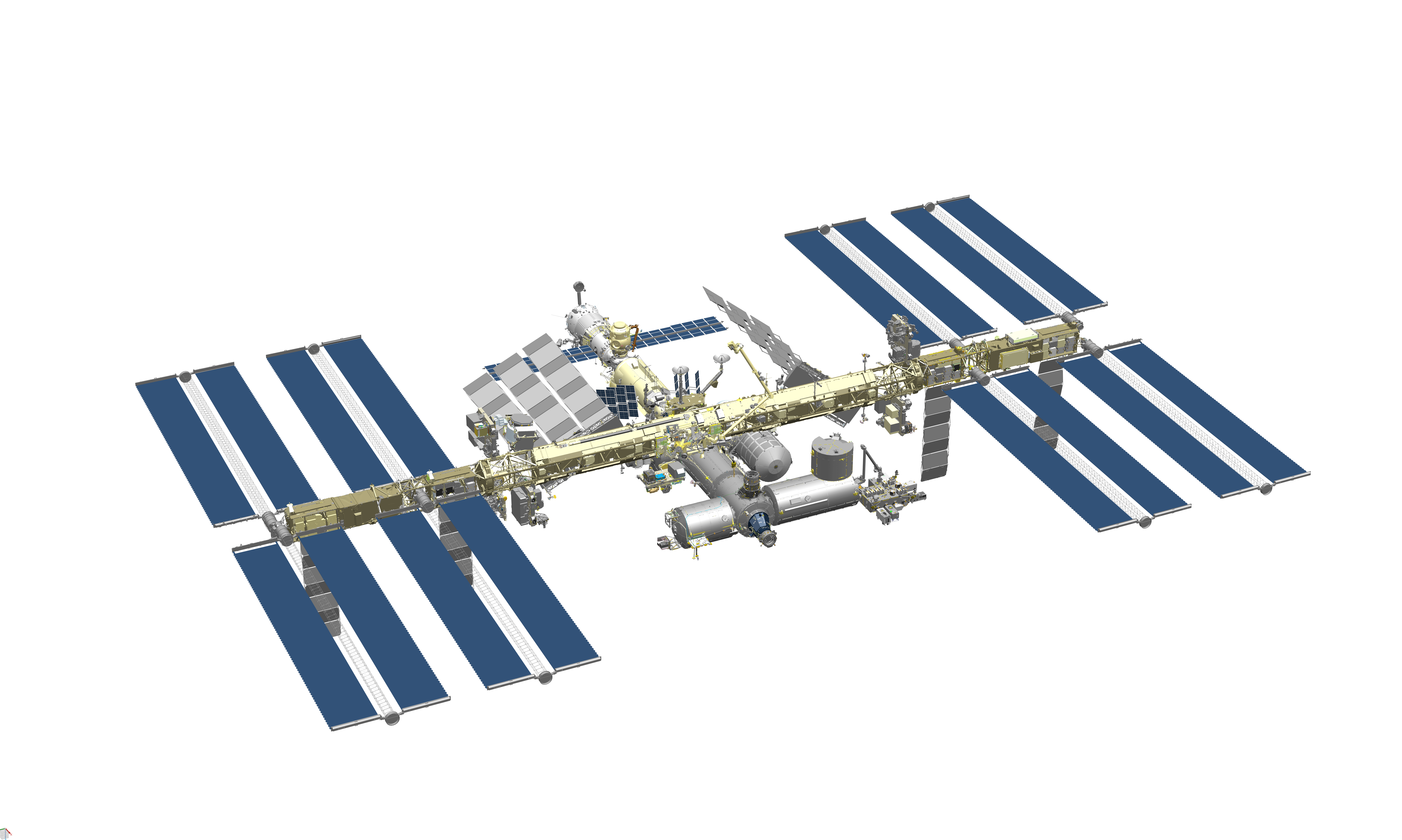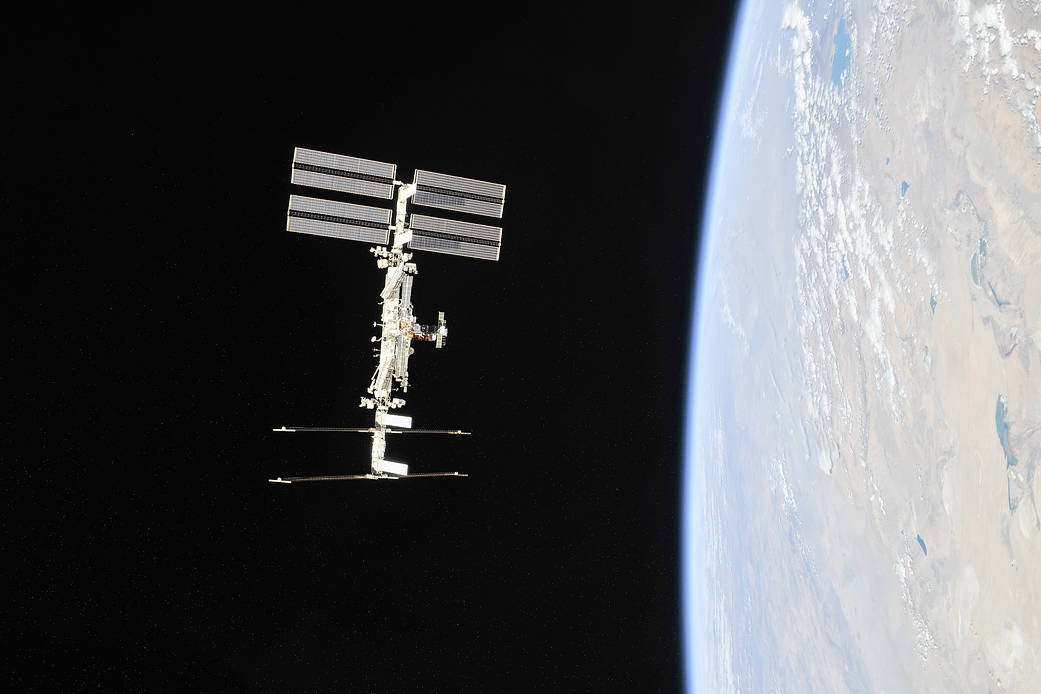NASA has put on hold a spacewalk from the International Space Station that was planned for today, citing a “debris notification” that could put crew members at risk. While the specific source of this potential hazard has not been disclosed, the decision comes within weeks of a Russian anti-satellite weapon test that created a cloud of shrapnel in low-Earth orbit. NASA officials have previously been extremely critical of the test, including pointing out the particular dangers these fragments could pose to the International Space Station, or ISS, the crew of which has recently been forced to take action to mitigate the threat.
The spacewalk was to have been conducted by astronauts Thomas Marshburn and Kayla Barron but has now been postponed indefinitely, according to a NASA statement on Twitter just five hours before the mission was due to begin. We reached out to NASA for more details and to confirm whether the debris in question is from the Russian ASAT test, which we discussed in this previous article.
Marshburn and Barron were among the latest four astronauts to arrive at the ISS, having left the Kennedy Space Center in Cape Canaveral, Florida in a SpaceX Crew Dragon capsule on November 11. They joined two Russian cosmonauts and a NASA astronaut already on board.
The purpose of their planned spacewalk was to replace a defective antenna, part of the S-band radio communication system, on the ISS, which is orbiting around 250 miles above the Earth. The 20-year-old antenna was no longer able to send signals to Earth, although the ISS is fitted with backup systems. The spacewalk had been expected to last around 6.5 hours and was scheduled to be broadcast live.
“Due to the lack of opportunity to properly assess the risk it could pose to the astronauts, teams have decided to delay the Nov. 30 spacewalk until more information is available,” the space agency tweeted.
It’s unclear how close to the ISS the debris was detected. NASA has also not confirmed if this debris is a direct result of Russia’s ASAT test, which was occurred on November 15. Dana Weigel, NASA’s Deputy ISS Program Manager, said yesterday that the resulting debris cloud, containing approximately 1,700 larger fragments around the station’s orbit, had dispersed “quite a bit more” since the test, but that some risk remains. NASA has calculated the chances of remaining fragments — which are traveling at around 17,000 miles per hour — puncturing a spacewalkers’ suit is 7 percent higher than it was before the ASAT test.
NASA had already previously announced a “slightly elevated” risk due to debris left by the breakup of the Tselina-D satellite, part of a long-defunct Soviet-era electronic intelligence constellation that was targeted by the mysterious ASAT weapon.
Video showing a previous test of the Russian A-235 Nudol ballistic missile interceptor, which also has an ASAT role:

“It’s unbelievable that the Russian government would do this test and threaten not only international astronauts, but their own cosmonauts that are onboard,” NASA Administrator, Bill Nelson, said at the time about the ASAT test.
“I’m outraged by this irresponsible and destabilizing action,” Nelson added. “With its long and storied history in human spaceflight, it is unthinkable that Russia would endanger not only the American and international partner astronauts on the ISS, but also their own cosmonauts. Their actions are reckless and dangerous.”
The U.S. Secretary of State, Antony Blinken, meanwhile also criticized Russia for its “reckless and irresponsible behavior,” adding that it had shown it was “willing to imperil the exploration and use of outer space by all nations.” In a Nov. 15 statement, Blinken noted that the ASAT test, apparently involving a direct-ascent interceptor, had so far generated more than 1,500 pieces of trackable orbital debris and “will likely generate hundreds of thousands of pieces of smaller orbital debris.”
For its part, Moscow says its ASAT test was successful and that the resultant debris poses no “threat to space activity.” The Russian Minister of Defense, Sergei Shoigu, explained the launch used a “promising” system that “accurately” struck its target, but few other details of the ASAT system have emerged.
The Russian space agency, Roscosmos, issued a statement that it was monitoring the debris in order to “prevent and counter all possible threats to the safety” of the ISS. The Kremlin has also announced tentative plans for its withdrawal from the ISS, Russian Deputy Prime Minister Yury Borisov suggesting the country could extricate itself from the program early as 2025 and instead develop its own national space station.

However, the debris risk is being taken very seriously within NASA. Indeed, fragments from the ASAT test had been a cause for concern aboard the ISS prior to today. Even before reports of the weapon test began to appear, it was separately reported that personnel on the ISS have been warned about a debris cloud. According to NASA, the seven members crew sought refuge in a docked spacecraft to escape in an emergency, if necessary.
Although that precaution proved unnecessary, in the wake of the ASAT test the ISS crew took other actions to help mitigate a possible impact from the debris. This required them to open and close hatches between different labs in the station roughly every 90 minutes when they got close to the fragments.

As well as this recent ASAT test, space junk, in general, remains a major threat to the ISS and other space activities. Among the millions of items of debris, are the remains of a Chinese ASAT test in January 2007 which produced a cloud of more than 3,000 pieces, as well as parts of a non-operational Russian Cosmos satellite that slammed into a satellite belonging to the U.S. Iridium company in 2009. The latter event left nearly 2,000 pieces of debris of 4 inches or more in diameter, and thousands more smaller pieces.
Other debris includes disused rocket parts as well as natural hazards, such as meteoroids. While we don’t have confirmation that the pause on the planned spacewalk is a direct result of the Russian ASAT test, it’s clear that U.S. officials and NASA view that incident as a source of potential risk. This highlights the fact that weapons of this kind pose a threat to objects in space not only as offensive weapons but simply through their testing and the considerable amount of debris they can generate.
Updated 6:30 PM EST:
NASA has now confirmed to The War Zone that the debris that forced today’s spacewalk to be pushed back was not related to the Russian anti-satellite weapon test. The spacewalk has now also been rescheduled for Dec. 2.
NASA separately issued a statement regarding the spacewalk, which is as follows:
After receiving additional information about a late notification debris event on Monday, NASA determined the orbit of the debris does not pose a risk to a scheduled spacewalk by Tom Marshburn and Kayla Barron or to International Space Station operations. Delaying the spacewalk provided an opportunity for NASA to evaluate the risk from the debris notification. The spacewalk to replace a faulty antenna system on the station’s truss structure is now planned for Thursday, Dec. 2.
Contact the author: thomas@thedrive.com
